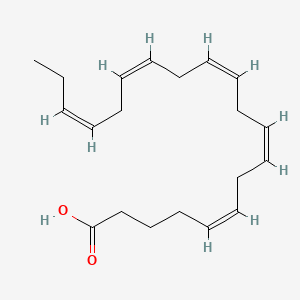| Liu Q et al. |
Dietary n-6:n-3 ratio and Vitamin E improve motility characteristics in association with membrane properties of boar spermatozoa. |
2017 Mar-Apr |
Asian J. Androl. |
pmid:26763547
|
| Manni A et al. |
Stearoyl-CoA desaturase-1, a novel target of omega-3 fatty acids for reducing breast cancer risk in obese postmenopausal women. |
2017 |
Eur J Clin Nutr |
pmid:28145413
|
| Burak C et al. |
Effects of the flavonol quercetin and α-linolenic acid on n-3 PUFA status in metabolically healthy men and women: a randomised, double-blinded, placebo-controlled, crossover trial. |
2017 |
Br. J. Nutr. |
pmid:28366181
|
| Neuman JC et al. |
Enriching Islet Phospholipids With Eicosapentaenoic Acid Reduces Prostaglandin E2 Signaling and Enhances Diabetic β-Cell Function. |
2017 |
Diabetes |
pmid:28193789
|
| Aslan Ä° et al. |
Decreased eicosapentaenoic acid levels in acne vulgaris reveals the presence of a proinflammatory state. |
2017 |
Prostaglandins Other Lipid Mediat. |
pmid:28025036
|
| Yilmaz JL et al. |
Determination of Substrate Preferences for Desaturases and Elongases for Production of Docosahexaenoic Acid from Oleic Acid in Engineered Canola. |
2017 |
Lipids |
pmid:28197856
|
| Veselinovic M et al. |
Clinical Benefits of n-3 PUFA and ɤ-Linolenic Acid in Patients with Rheumatoid Arthritis. |
2017 |
Nutrients |
pmid:28346333
|
| Tigistu-Sahle F et al. |
Metabolism and phospholipid assembly of polyunsaturated fatty acids in human bone marrow mesenchymal stromal cells. |
2017 |
J. Lipid Res. |
pmid:27856675
|
| Liu Y et al. |
Eicosapentaenoic Acid-Enriched Phosphatidylcholine Attenuated Hepatic Steatosis Through Regulation of Cholesterol Metabolism in Rats with Nonalcoholic Fatty Liver Disease. |
2017 |
Lipids |
pmid:28012135
|
| Park H et al. |
Towards the development of a sustainable soya bean-based feedstock for aquaculture. |
2017 |
Plant Biotechnol. J. |
pmid:27496594
|
